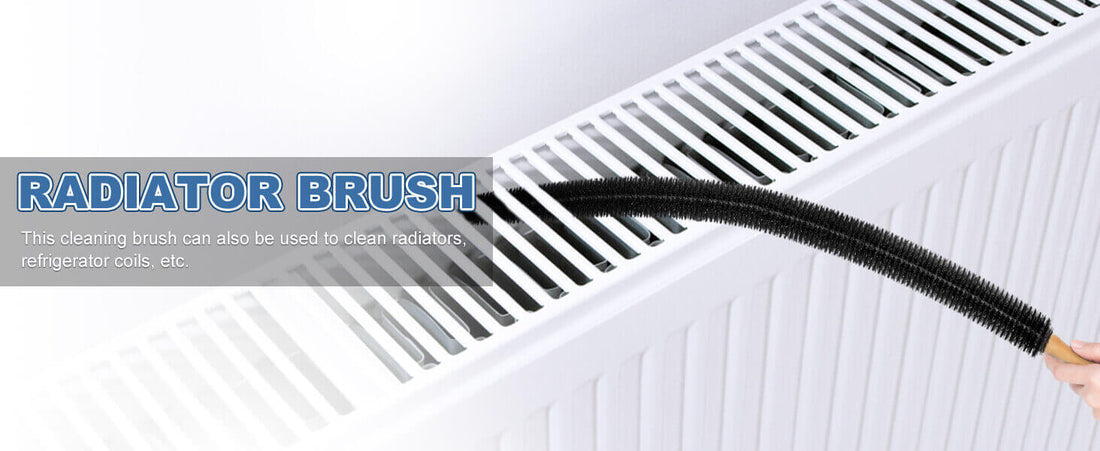
Metal vs Plastic Dryer Vents: Which One Is Safer, More Durable, and Worth the Investment?
Share
If you’ve ever peeked behind your dryer in the laundry room, you’ve probably seen a long tube running from the back of the machine to a wall or window vent. That’s your dryer vent — and believe it or not, the material it’s made from could be affecting not just your appliance’s performance but also your home’s safety.
Let’s break down the real differences between metal vs plastic dryer vents — and why your choice matters more than you think.
Why Your Dryer Vent Matters — Especially in a Family Home
For most families, the laundry room is a high-traffic, high-use zone. The dryer might be running multiple loads a week (or a day — let’s be real). But when lint builds up in your dryer vent, especially in poorly designed or outdated ductwork, it becomes a real fire hazard.
According to the National Fire Protection Association, dryers cause nearly 15,000 home fires a year in the U.S., and clogged or flammable vents are one of the top causes.
This isn’t just about efficiency — it’s about protecting your home and your family.
Types of Dryer Vents You’ll Find at Home
Not all vents are created equal. Here’s a quick overview of the most common options:
Plastic Dryer Vents
- Usually made from thin PVC or vinyl
- Inexpensive and flexible
- Easy to install but not fire-resistant
Flexible Metal Vents (Foil or Aluminum)
- More heat-resistant
- Better than plastic, but still not ideal for long runs
- Can sag or collect lint over time
Rigid Metal Vents (Galvanized Steel or Aluminum)
- Best airflow, meets most building codes
- Smooth interior reduces lint buildup
- Long-lasting, safer, and easier to clean
Fire Safety: Metal Wins, No Contest
Here’s the deal: plastic dryer vents can literally melt. If your dryer overheats or if a fire starts from accumulated lint, plastic ducts can catch fire or melt instantly, spreading flames quickly.
Rigid metal vents, on the other hand, can contain the heat and help prevent flames from spreading through your laundry room walls. If you’re serious about dryer fire prevention, going with metal is the safest choice — hands down.
Cleaning & Maintenance: Which Is Easier to Keep Lint-Free?
Let’s talk real-life stuff: dryer lint. It’s sneaky. It builds up inside your ductwork, even if you clean the lint trap regularly. Over time, it clogs airflow, makes your dryer work harder, and hikes up your energy bill.
- Plastic vents often have ridges and soft curves that trap lint.
- Metal vents, especially rigid ones, are smooth inside and easier to clean with a proper dryer vent cleaning kit.
And yes, this is where tools like the Sealegend dryer vent cleaning brush come in handy. These are made specifically to keep your vent lines clear and safe, whether you're using a shop vacuum or an ordinary home vacuum.
Energy Efficiency: Better Airflow = Lower Bills
A blocked or inefficient vent means longer drying times. That means more energy used, more wear on your machine, and higher monthly bills.
Metal dryer vents, especially rigid ones, offer better airflow because they don’t collapse or trap lint as easily. If you’re trying to run an energy-efficient home, this small switch can make a real difference.
Installation & Cost: Is Metal Worth It?
- Plastic vents may be cheaper upfront, but they often need replacing sooner.
- Metal vents may cost a bit more initially, but they’ll last longer, work better, and give you peace of mind.
If you’re handy, you can even DIY install rigid metal ducting using basic tools — or call in a pro if you're replacing a long, tricky run.
What the Building Codes Say (and Why Insurance Might Care)
Many local building codes prohibit plastic dryer ducts for permanent installations. Even flexible foil types are sometimes restricted to short connections only.
Some homeowners don’t realize this until it’s time to sell their home or file an insurance claim. Yes — your home insurance may even reject fire-related claims if your dryer vent system doesn’t meet code.
Don’t wait until it’s too late. Upgrading now is a smart, simple step toward home safety.
Final Verdict: Metal is Safer, Smarter, and More Family-Friendly
In a busy household, with kids, pets, and daily loads of laundry, choosing the right dryer vent material isn’t just a technical decision — it’s a safety upgrade.
Choose rigid metal ducts whenever possible. Pair them with proper vent cleaning tools and regular maintenance, and you’ll have:
- A safer laundry room
- Lower energy bills
- A longer-lasting dryer
- And most importantly, peace of mind
Bonus Tips: Keeping Your Dryer Vent in Top Shape
- Clean your vent every 3–6 months, depending on use
- Always check the outdoor vent cap for lint buildup
- Use a dryer vent brush kit for deep cleaning
- Don’t push the dryer too close to the wall — avoid kinking the hose
Want to make your dryer safer today?
Explore Sealegend’s best-selling dryer vent cleaning kits — trusted by thousands of households for easy, affordable lint removal.
